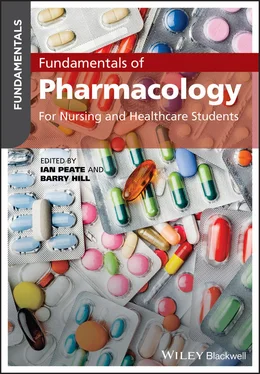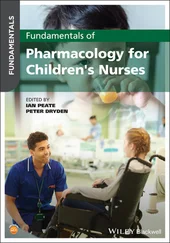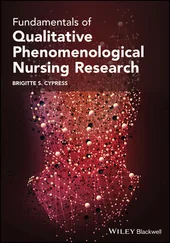Scottish Intercollegiate Guidelines Network (SIGN)
The SIGN was formed to improve the quality of healthcare for patients in Scotland by reducing variation in practice and outcome. SIGN collaborate with a network of clinicians, other health and social care professionals, patient organisations and individuals to develop evidence‐based guidelines. SIGN guidelines are based on a systematic review of the scientific literature and are aimed at aiding the translation of new knowledge into action. The guidelines are intended to:
help health and social care professionals and patients understand medical evidence and use it to make decisions about healthcare;
reduce unwarranted variations in practice and make sure patients get the best care available, no matter where they live;
improve healthcare across Scotland by focusing on patient‐important outcomes.
NICE and SIGN both produce patient booklets that are a lay translation of the clinical guidelines. These booklets explain the recommendations in the clinical guideline and help to make patients aware of the treatment they should expect to receive. They are intended to:
help patients and carers understand the latest evidence about diagnosis, treatment and self‐care;
empower patients to participate fully in decisions about the management of their condition in discussion with healthcare professionals;
highlight where there are areas of uncertainty in the management of their condition.
This chapter has provided an overview of the main pharmaceutical and prescribing reference guides used within clinical practice. Guidance has been given to encourage you to start to navigate the BNF in particular, to ensure you know where to find all the information needed about any medicinal product or device in order to ensure safe and effective practice. The differences between paper based and online versions have been highlighted to ensure you are aware where to access the most up‐to‐date and accurate drug information.
1 Joint Formulary Committee (2019a). How BNF publications are constructed: Assessing the evidence [Online]. https://bnf.nice.org.uk/about/how‐bnf‐publications‐are‐constructed.html(accessed 17 September 2019).
2 Joint Formulary Committee (2019b). British National Formulary: How to use BNF publications online [Online]. London: Joint Formulary Committee. https://bnf.nice.org.uk/about/how‐to‐use‐bnf‐publications‐online.html(accessed 17 September 2019).
3 Nursing and Midwifery Council (2018a). The Code: professional standards of practice and behaviour for nurses, midwives and nursing associates [Online]. www.nmc.org.uk/standards/code(accessed 20 September 2019).
4 Nursing and Midwifery Council (2018b). Standards of proficiency for nursing associates [Online]. https://www.nmc.org.uk/standards/standards‐for‐nursing‐associates/standards‐of‐proficiency‐for‐nursing‐associates/(accessed 20 September 2019).
5 Young, S. and Pitcher, B. (2016). Medicine Management for Nurses at a Glance. Oxford: Wiley.
Electronic Medicines Compendium www.medicines.org.uk/emc
National Institute for Health and Care Excellence (NICE) Information on Medicines and Prescribing www.nice.org.uk/about/nice‐communities/medicines‐and‐prescribing
Joint Royal Colleges of Ambulance and Liaison Committee (JRCACLC) www.jrcalc.org.uk
Scottish Intercollegiate Guidelines Network (SIGN) www.sign.ac.uk
1 UK Drug Tariff https://www.nhsbsa.nhs.uk/pharmacies‐gp‐practices‐and‐appliance‐contractors/drug‐tariff
Multiple choice questions
1 Which of the following are all pharmaceutical reference guides?MIMS, NICE, and emcSIGN, BNF, and MIMSBNF, MIMS, and emc
2 What does the BNF stand for?British National FormularyBritish National FormulationsBranded National Formulary
3 How many times a year is the BNF published?OnceTwiceThree times
4 Does the BNF detail all the information necessary for prescribing and dispensing?Yes, alwaysNot alwaysNo
5 What does PoM stand for?Pharmacy‐only medicinePrescribed oral medicinePrescription‐only medicine
6 MIMS is primarily intended for use in which healthcare setting?All healthcare settingsPrimary careSecondary care
7 Within MIMS, how are you able to search for a drug?By drug nameBy conditionBy manufacturerAll of the above
8 What does the abbreviation p.c. mean?Before foodWith foodAfter food
9 Where will you find the “blacklist”?Within the BNFWithin the Drug TariffWithin NICE
10 On a device, what does the CE mark signify?That the device has been tried and tested and is safe to useThat the device can be prescribedThat the device has copyright protection
11 How often is the Drug Tariff updated?ContinuallyWeeklyMonthly
12 Which document informs healthcare professionals on how to prescribe and use a medicine correctly?A clinical trial paperProduct informationSummaries of product characteristics
13 A PIL is a medicine leaflet written for whom?Healthcare professionalsPharmacy staffPatients
14 Where will you find the most up‐to‐date information about the use of medicines?BNF/MIMS paper copyBNF/MIMS onlineNICE guidance
15 You find an outdated BNF being used within a clinical area, what should you do?Nothing, it is still safe to use an outdated BNFNothing, as it is not your place to say anythingSpeak to a senior member of staff to get it replaced with an up‐to‐date version
Chapter 3 Legal and ethical issues
Claire Leader, Emma Senior and Deborah Flynn
The aim of this chapter is to examine the legal and ethical considerations that are related to pharmacology and medicines management in contemporary healthcare settings.
By the end of this chapter, the reader will be able to:
1 Define commonly used legal and ethical concepts
2 Identify situations where legal and ethical considerations are required to make defensible decisions
3 Explain how legal and ethical considerations influence the decision‐making process
4 Apply legal and ethical considerations to a variety of scenarios likely to be encountered in modern healthcare settings
1 According to UK law, what must be established in order to prove a case of negligence?
2 Can a wife consent to treatment on behalf of their husband who lacks capacity?
3 What is the meaning of beneficence in relation to ethics?
4 Can healthcare professionals provide treatment for children without the consent of their responsible parent in an emergency situation?
5 What is a professional body's primary function?
This section will introduce readers to fundamental ethical principles relating to nursing and healthcare, as well as some of the key legal concepts with which healthcare professionals should become familiar in order to ensure that decisions around pharmacology have a legal and ethical basis.
Any decisions made about pharmacology require consideration of various issues: what you are legally obliged to do, what you are professionally guided to do and what is in the best interests of the person within the situation. In practice, the three usually exist together; but before considering them as a whole, let's start with the fundamentals and look at them separately.
This chapter will consider the three components that underpin high‐quality decision‐making in pharmacology:
the law
ethical principles and theories
regulatory bodies.
Читать дальше












